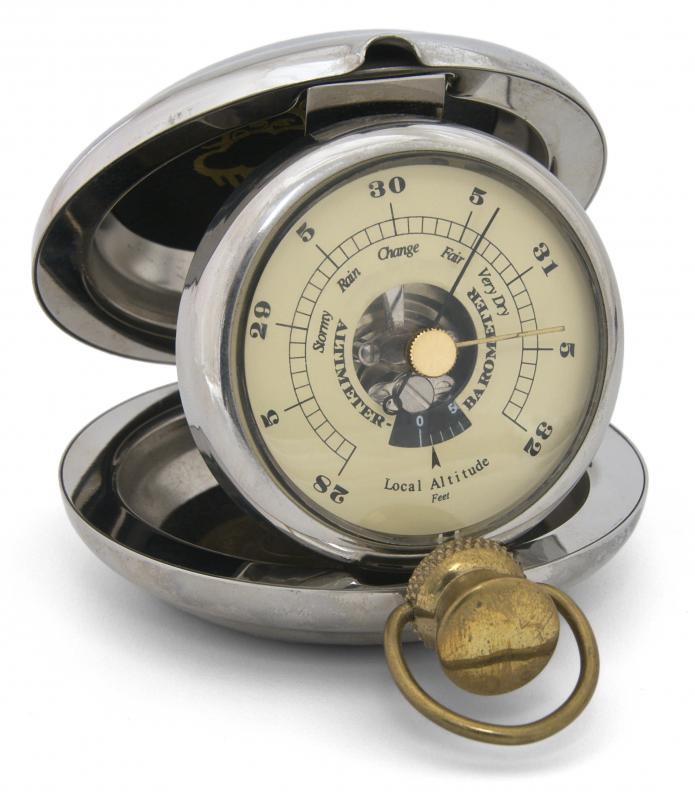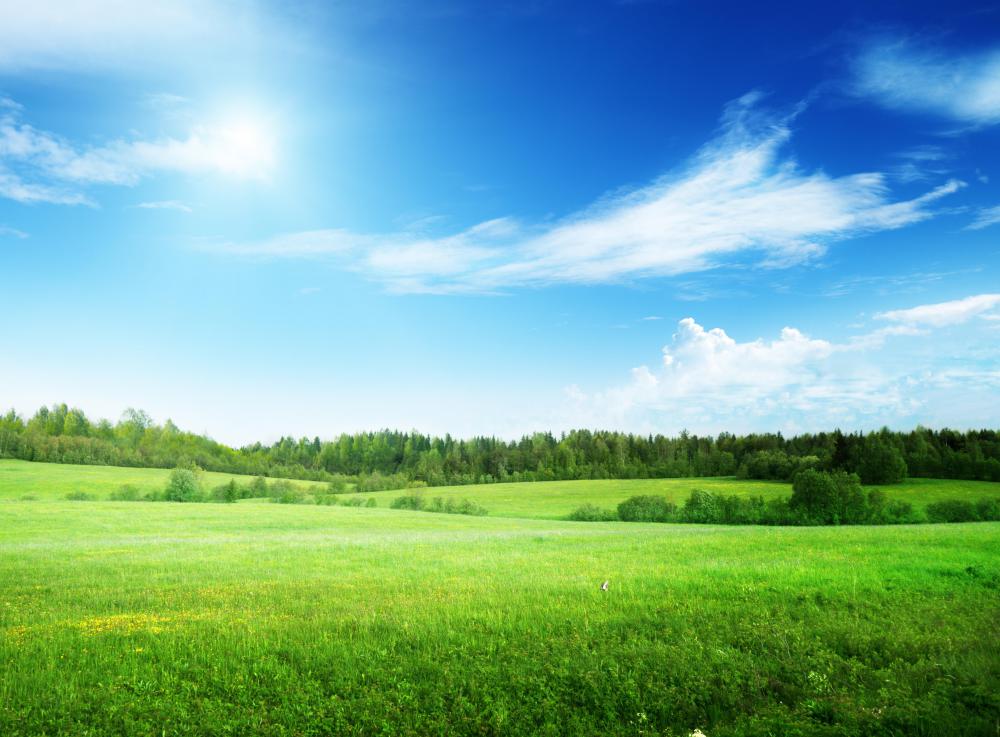What is Surface Pressure?
Surface pressure, also known as atmospheric pressure, is the pressure that the air exerts on the surface of the Earth. Air has mass, and the effects of gravity on that mass cause air pressure. Air pressure differs by geographical region and by season. Changes in air pressure, throughout the year and over different parts of the Earth, are largely responsible for changes in weather. Atmospheric pressure is typically measured with a barometer, and it is most often measured in units called Pascals (Pa).
As a whole, the atmosphere of the Earth exerts pressure on the surface of the Earth equal to 100,000 Pascals or 100 kilopascals (kPa). This number represents the average surface pressure of the atmosphere on the Earth. In reality, surface pressure can vary widely over different geographical areas. Variances in air pressure depend largely on the seasons of the year, and they are considered responsible for most weather phenomenon.

From the months of December to February, areas of of high atmospheric pressure typically exist over Northern Africa and Spain, in the Pacific Ocean off the Californian coast, over central Asia, over central North America, and over subtropical ocean waters in the Southern Hemisphere. The southernmost regions of Greenland and the Aleutian Islands can usually be expected to experience low surface pressure during these months of the year.

From the months of June through August, these pressure systems typically change. The high pressure systems over central Asia, as well as the low pressure systems over Greenland and the Aleutian Islands, generally vanish. The high pressure systems of the Pacific Ocean, Spain, North Africa, and subtropical Southern Hemisphere waters, generally grow stronger and extend to the north. High pressure systems tend to appear over Antarctica and Australia during these months, while central and southwest Asia develop the low surface pressure said to contribute to that continent's rainy season.

Weather usually occurs when air moves from an area of high surface pressure to an area of low surface pressure. The movement of air is commonly known as wind, and it typically moves in spiral-shaped patterns caused by the Earth's rotation. Air subjected to higher levels of surface pressure is usually more dense than air subjected to low levels of surface pressure; this difference in density normally contributes to the movement of air from high to low pressure areas. Air generally becomes less dense as it moves into areas of low atmospheric pressure. This change in air density often contributes to the development of atmospheric depressions, which are characterized by clouds and precipitation.
AS FEATURED ON:
AS FEATURED ON:













Discussion Comments
Please note that the average surface atmospheric pressure for the Earth is 101.325 kilopascals. Pressure of 1 atmosphere does NOT equal 100,000 Pascals
Post your comments